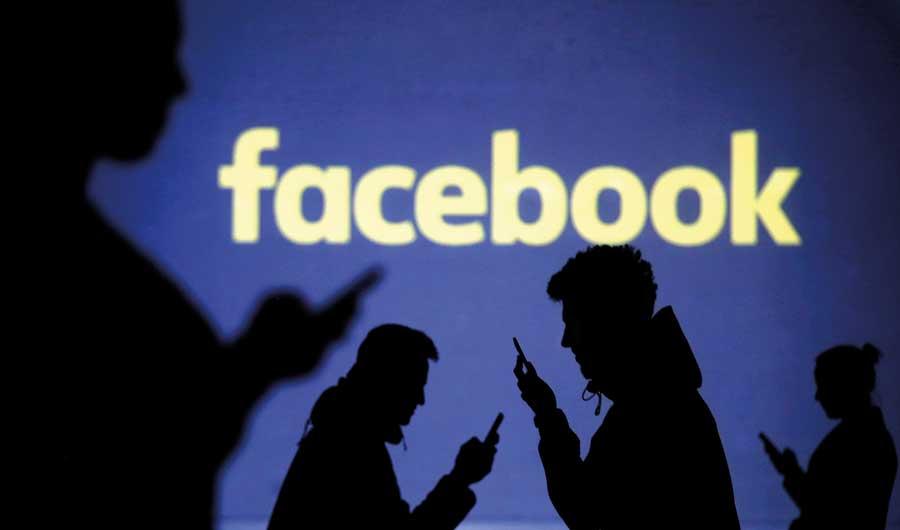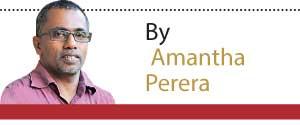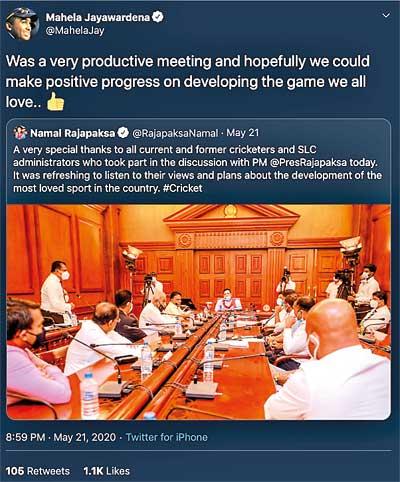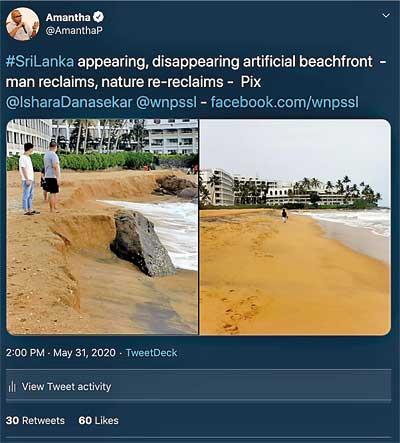Reply To:
Name - Reply Comment

- It was because of the social media attention that the Coast Conservation Department has come out with the assessment
- The digital flash mob comes together when an incident goes viral
- There is the risk of fakes and those who can call on the support of cyber soldiers taking over a conversation
The online flash mob is here to stay.
Without this ability to bring voices together organically or otherwise social currents of today would not be the same anymore. A Facebook post, a Tweet, an Instagram picture can galvanise and make for a flood of opinions –  divergent, thought out, outright dumb and in all hues and shades, crashing into one another in one forum.
divergent, thought out, outright dumb and in all hues and shades, crashing into one another in one forum.
During the last few days Sri Lanka has seen this happen at least four times, the rescue and subsequent death of the black leopard, the reclaiming and subsequent erosion of part of the Mount Lavinia beach, the funeral procession of late Arumugam Thondaman and the new cricket stadium fiasco.
To gauge the impact, imagine if these four events were to take place within a national lockdown lasting for over two months, but without social media. And within a mass media environment where media outlets have no shame in spinning stories into fables to suit political and business agendas.
 The events would be reported on, but the impact of each would be completely different without the smartphone or the computer at your disposal. The digital connectivity not only allowed different views, details and images of the incidents to come into the public domain, but without the digital platforms, the sole custodians of what gets into public domain would be the media outlets whose impartiality and professionalism leave many aghast. Not only is the public information sphere richer and more diverse, but so is the public dialogue.
The events would be reported on, but the impact of each would be completely different without the smartphone or the computer at your disposal. The digital connectivity not only allowed different views, details and images of the incidents to come into the public domain, but without the digital platforms, the sole custodians of what gets into public domain would be the media outlets whose impartiality and professionalism leave many aghast. Not only is the public information sphere richer and more diverse, but so is the public dialogue.
It was because of the social media attention that the Coast Conservation Department has come out with the assessment that the erosion of the filled Mount Lavinia beach was planned, though it really does not make sense to the lay mind. It was because of the same attention that the Wildlife Department will find it hard to wiggle out of responsibility for the death of the black leopard.
Just think of how Mahela Jayawardena and Co would have had to make their impressions on the new cricket stadium be known if there was no Twitter, or no Facebook. Let’s organise a press conference during a national lockdown, let’s hope that we get some media types into it then lets pray and may be grease the system that what was said at the presser actually gets on air or paper. Achieve all three of the above, still there would be no  guarantee that the reporting would be slanted or mere spiel. Good luck all over.
guarantee that the reporting would be slanted or mere spiel. Good luck all over.
The digital flash mob comes together when an incident goes viral.
Is it so hard to predict why it does so? The question must be posed whether the digital protests are a true reflection of real social trends?
The mob can be artificially created as well, though there are no indications that there was any such artificially influenced creation in Sri Lanka recently. It can be artificially manipulated and quite easily by those who have cyber resources primed for such work. That has happened in Sri Lanka in the not so distant past.
There is the risk of fakes and those who can call on the support of cyber soldiers taking over a conversation. But there is also the opportunity to hold those in authority accountable. For someone who feels deeply about an issue, there is no need to chase after media outlets anymore. The downsides aside, the digital mob does play an important role in open discourse. Especially in the current circumstances where self-censorship is rampant.
The online flash-mob is
here to stay.
The writer is a Post-grad Researcher at CQUniversity, Melbourne focusing on online journalism and trauma
Twitter - @amanthap